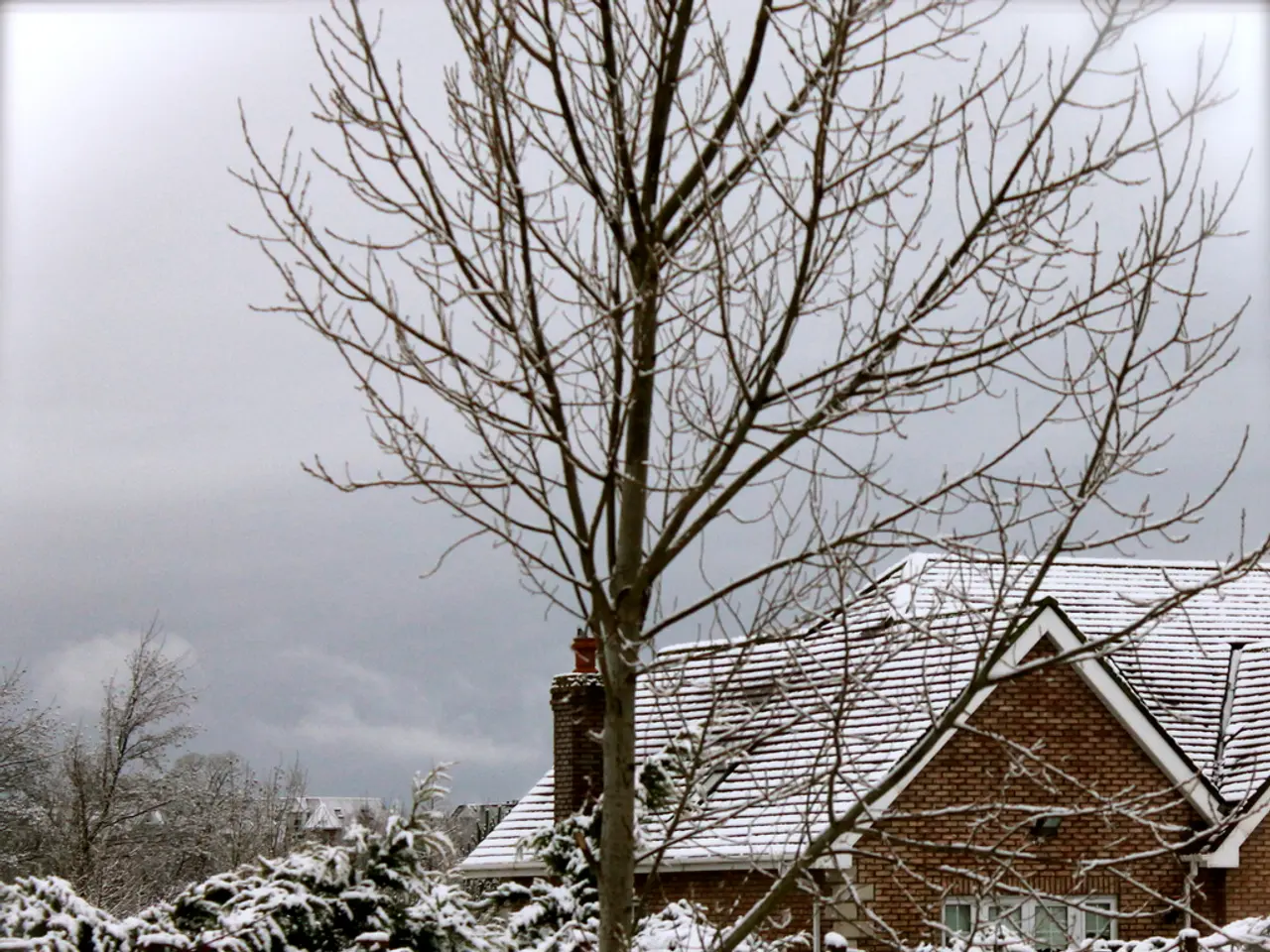Winter Gardening Challenges: Coping with Winter Burn and Frost Injury
Winter can be a challenging season for plants, with sudden weather shifts and harsh conditions causing various forms of damage. To help your garden survive and thrive during the cold months, here are some strategies to prevent and treat winter damage in plants.
Frost damage is one of the most common issues during winter. To protect plants from frost, cover them with insulating materials such as evergreen boughs, straw, leaves, old blankets, sheets, burlap, or woven row covers. For tender perennials, mulch heavily around the roots with organic matter like straw or compost. Container plants are vulnerable to freezing and should be moved indoors to unheated garages or wrapped in bubble wrap and placed on the ground under covers.
Another issue is winter sunscald, which affects young or thin-barked trees and shrubs. To prevent sunscald, use burlap or other breathable coverings to shield trunks and exposed branches. Wrapping protects against temperature fluctuations and intense winter sun that can cause bark crack and damage.
Broken branches are a common problem after snowstorms. Before heavy snow or ice storms, gently knock snow off fragile branches and tie branches upward with rope to prevent breakage. Regular pruning of weak or damaged branches can reduce breakage risk.
Winter desiccation, or drying out due to wind and frozen soil, can damage plants as well. Mulching with organic matter conserves soil moisture and temperature, protecting roots. Wrapping evergreen boughs around plants or using burlap can reduce exposure to drying winds. For broadleaf evergreens, misting leaves before a hard freeze and providing windbreaks can help minimize moisture loss.
Infestation from burrowing animals such as rabbits or voles is another concern during winter. Prevent animals by placing physical barriers like hardware cloth around trunks and at the base of plants to keep them from chewing bark or roots. Mulching and snow management can also discourage rodents by removing easy tunnels.
In addition to these strategies, maintaining good drainage, removing debris and dead plant matter, and watering plants generously but carefully during the winter season can help your garden survive and recover from winter stress effectively.
Remember that while these practices can help protect your plants, sudden weather shifts are hard to predict, and it's almost unavoidable to completely shield gardens from winter damage. New plants, budding plants, or evergreens with young barks are most susceptible to winter desiccation. Wet, cold, and windy weather can cause severe damage to trees and shrubs during the winter season.
Signs of frost damage include browning of new plant growths, dead or dying buds, delayed leaf developments, and blackened leaves. Infestation from burrowing animals can occur during the winter season, with rats, rabbits, and mice nibbling on tree bark and causing damage to trees. Broken branches and stems are common after snowstorms, and can be prevented by fluffing snow-covered branches and propping up ice-covered branches.
Winter burns, frost damage, and winter desiccation can cause tissue deaths, scorched leaves, and winter burns. If the majority of a plant's upper growth has been damaged by frost, it may need to be pruned within a few inches of the ground. Winter damage forces plants to use up their food reserves to replace damaged parts, leaving them vulnerable during the spring season.
Laying mulch helps insulate plants and enhances the soil's ability to hold moisture during the winter season. Frost damage causes ice crystals to form within plant tissues, damaging cells and affecting leaves, new growths, stems, branches, and eventually roots. Permanent winter damage can occur due to prolonged or severe weather conditions or sudden drops in temperature.
Using plant coverings, such as old sheets or plastic films, can help shield plants from harsh weather conditions during winter. Pruning should be done after new growth appears to encourage new plant growth. Sunscald can be prevented by wrapping trunks with burlap and other protective coverings. Clustering container plants near homes or in sheltered spots can help protect them from the cold.
Humane strategies such as keeping the lawn grass-free, surrounding trees and shrubs with mulching, and wrapping tree trunks with screen wire or hardware cloth can help prevent rodent infestation. Winter damage is a common issue in many gardens, especially in regions with varying climates and plant species.
By following these strategies, you can help your garden survive and thrive during the winter season, ensuring a beautiful and blooming garden come spring.
- To keep your home-and-garden lifestyle flourishing during winter, consider clustering container plants near your home or in sheltered spots to help protect them from the cold.
- A lifestyle balanced with regular gardening can be maintained throughout winter by mulching with organic matter like straw or compost to conserve soil moisture and temperature, protecting plant roots from winter desiccation.




